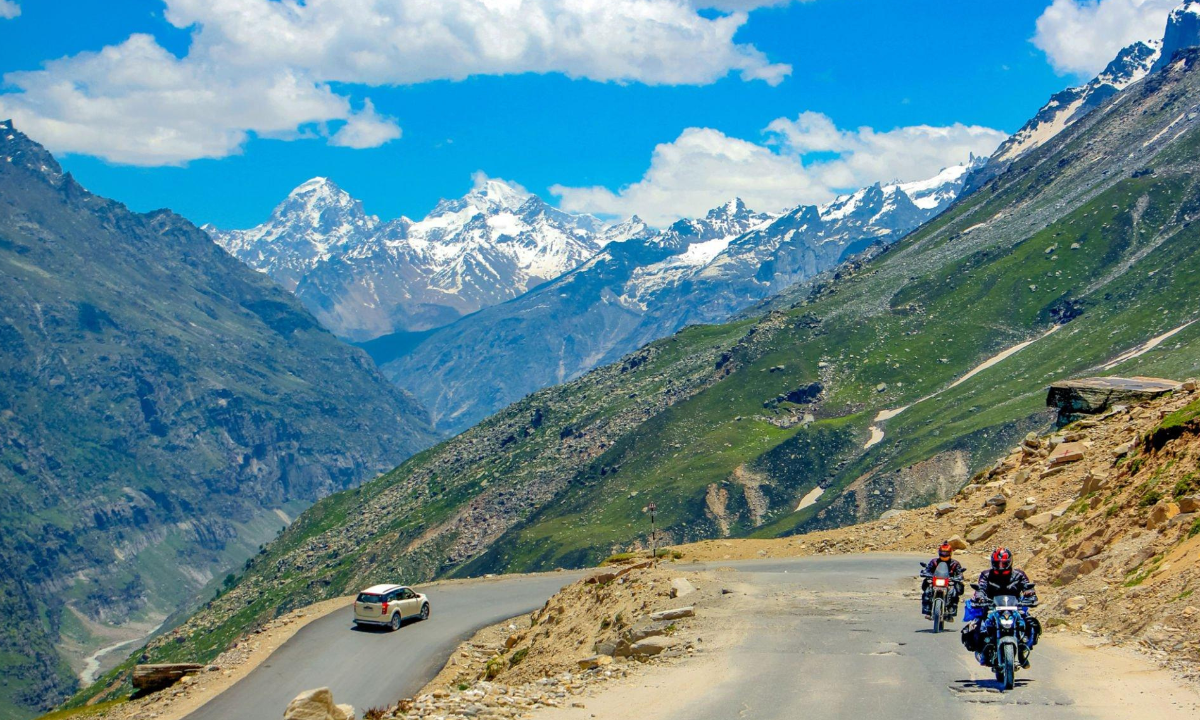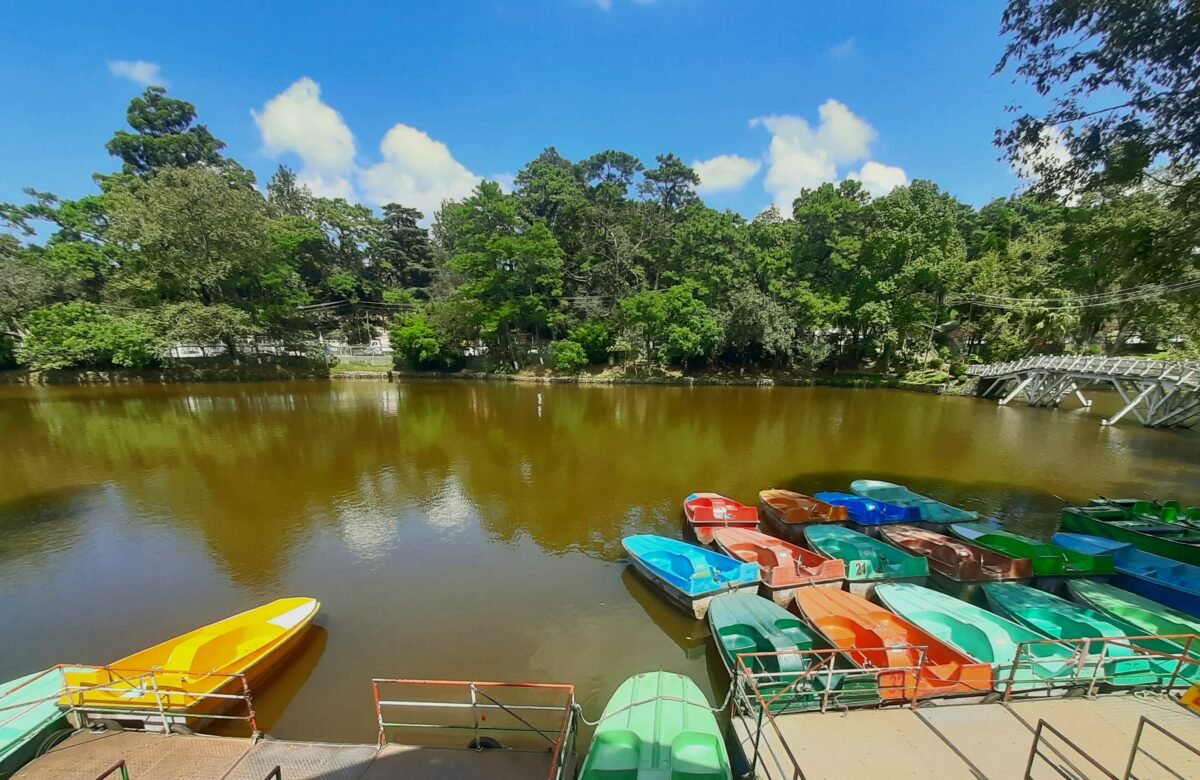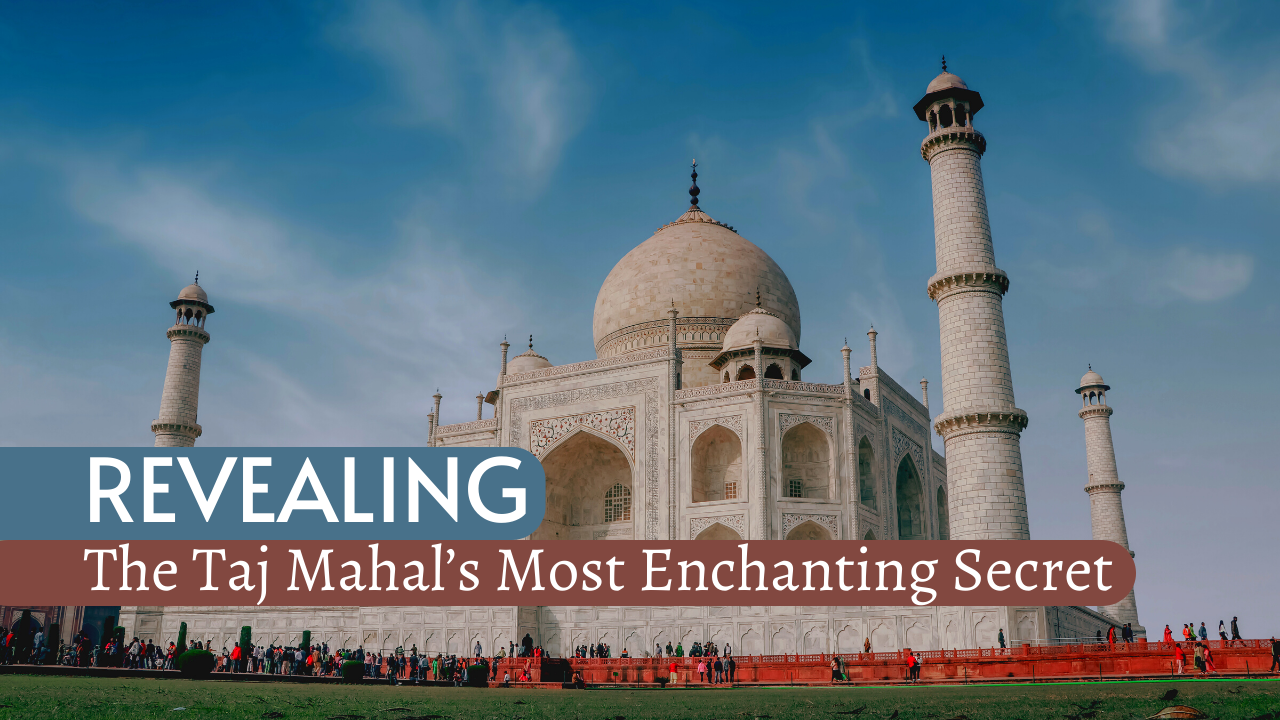
Revealing the Taj Mahal’s Most Enchanting Secrets
- TravelPopular Post
- December 20, 2022
- No Comment
- 8001
The History of the Taj Mahal
A marvel of Mughal construction called the Taj Mahal might be seen in Agra, India. This gleaming monument, which occupies 42 acres, is the height of beauty, but it also has a tragic tale to tell. This 400-year-old structure was once the largest and most impressive structure around. It is now regarded as the world’s eighth wonder. Twenty thousand workers toiled for 22 years straight, shedding blood and sweat to construct this majestic building.
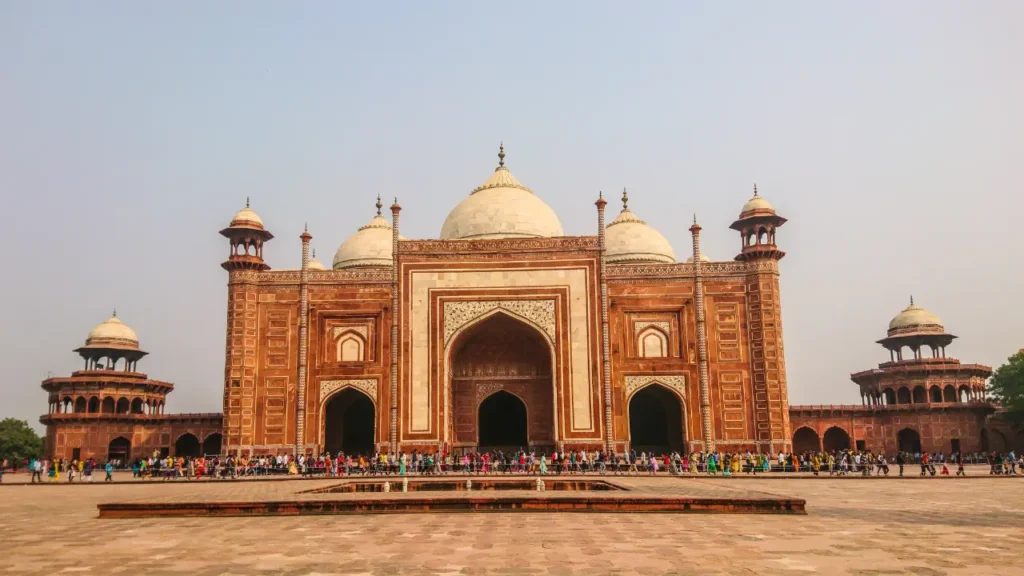
This marble-covered mausoleum is worth $1 billion, or more than Rs 7.5 crore if we estimate its current value. Because the Mughal architects left behind evidence of their extraordinary abilities that even the best engineers of today laud, this structure was constructed to seem fairly large when seen from behind the main gate. But the size automatically decreases as one approaches the main gate. Such mind-boggling techniques were not new to Mughal architects.
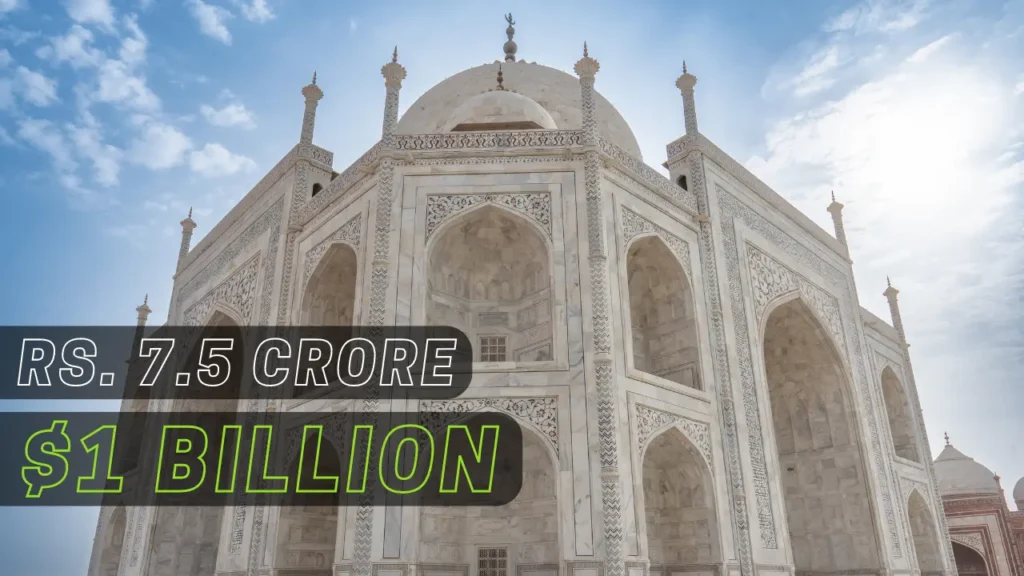
The four pillars at each of the four corners are not standing straight but sloping slightly outward. Because if they were maintained vertically straight, they would seem to be bending inward from a distance, as seen in this mosque photograph. The decision to tilt these pillars outward was made for another purpose. They will collapse outwards in a big earthquake, protecting the monument. But Why did its designers feel the need to defend it so fiercely?
and What are the Taj Mahal’s hidden mysteries from 400 years ago?
This will began in 1607 when the Mughal Empire controlled the whole area. Shahab-ud-din Muhammad Khurram, the Mughal emperor’s youngest son, turned 15 that day.
A grand celebration was held in the Agra Fort to commemorate the event. Because Khurram was the Emperor’s favourite kid, he used to get a birthday present of gold and diamonds equivalent to his weight because he was the Emperor’s favourite child. But on this occasion, something even more exceptional was going to occur.

The marriage of Khurram and the daughter of one of the Emperor’s attorneys was arranged. Mumtaz Mahal was her given name. On their first date, Mumtaz and Khurram fell in love with one another.
Nobody realised how morally corrupt this love would become at the moment. The prince won several wars for the next ten years. As a result, he was awarded the title Shah Jahan, Monarch of the World, by the Emperor.
Shah Jahan had six wives, all of whom resided in the Agra fort’s harem. Shah Jahan adored Mumtaz the best out of the six. He spent most of his time with Mumtaz Mahal for this reason. Time passed quickly, and the Mughal emperor passed away four years later, in 1621.
Seven years later, in 1628, Shah Jahan, who was fairly well-known in the Mughal Empire and the Emperor’s favourite son, took the throne. With its new monarch, the Mughal Empire was quite content. The Mughal Empire was at its height during this period. The Mughal Empire included most of Afghanistan, Pakistan, and India.
While Mumtaz Mahal used to make suggestions to Shah Jahan behind his back, the latter used to make all the choices. But nobody anticipated that this pleasant time would soon give way to sadness. After taking over the throne, the Mughal Empire was plunged into war barely a year later.
The fight raged for the following two years, and Shah Jahan prevailed. But before he could rejoice in his success, he received some extremely upsetting news. Mumtaj Mahal was unwell while giving birth to their 14th child, and on June 17, 1631, she passed away. The Mughal Empire as a whole fell into grief. This information struck Shah Jahan like an arrow, shattering his whole existence. Mumtaj Mahal, Shah Jahan’s first love and most cherished spouse passed away.
It’s been said that this tragedy brought on Shah Jahan’s gloom. He went without food for the next eight days and abstained from using perfume and listening to music for the next two years. Mumtaj Mahal had one last request before passing away. She requested that her interment be constructed within the most exquisite mausoleum ever. Shah Jahan decided to devote his whole life and fortune to this endeavour and fulfil Mumtaj Mahal’s last request.
Construction of the Taj Mahal started six months after Mumtaj Mahal’s death. From all around the empire, over 20,000 labourers, sculptors, and artisans were brought in. Shah Jahan’s directive caused armies of troops to be transported to Agra. Creating the most magnificent tower in the world was challenging since Mumtaj Mahal’s Grave was located on the Yamuna River bank. The soft terrain beside the river poses a risk to the Taj Mahal’s foundation if excavation occurs there.

Engineers from the Mughals began drilling several wells to address this issue. Workers dug the well till they came to dry ground. Then these wells were filled with rocks and debris, and huge stone columns were built on top of them.
Along with the workers, an army of elephants was utilised to complete this task. The Mughal engineers’ ruse proved successful, and a sturdy foundation was now ready to be built atop the soft ground. It was time to create a structure that no one had seen after laying the foundation.
A structure that would shatter all previous records. For the Taj Mahal’s design, Shah Jahan looked at the graves of his forefathers. His father’s grave inspired the pillars, while his grandfather’s tomb provided structural support. And the Dome concept from the grave of his uncle. And when all of these factors came together, a lovely design emerged.

Millions of bricks were baked there to create the building framework. This required a great deal of money and was by no means simple.
The royal wealth was disappearing day by day. Shah Jahan was unconcerned about anything; he wanted to finish this project. It is reported that during the Taj Mahal’s building, there were so many people around that local food resources were scarce as a result.
Shah Jahan had sent food supplies from the surrounding districts to Agra to take care of the labourers. The building’s primary structure had been finished after years of rugged construction; it was now time to add marble decorations. Agra is 400 miles distant from Rajasthan, where this stone was transported.
Because this region’s Makrana marble is still regarded as one of the best in the world. Shah Jahan had set aside the whole stock of Makrana marble for the Taj Mahal. This signifies that nobody was permitted to buy this stone until the Taj Mahal’s requirements were met. With the aid of many elephants, tonnes of marble were transported from Rajasthan to Agra.
But you must Be thinking…
How were this wonderful mausoleum and this 40-meter-high dome constructed when there was no concrete or steel?
One may appreciate its enormous scale by simply looking at the Taj Mahal’s dome. Currently, a steel structure is used to construct this kind of doom, but 400 years ago, only stones were available to construct a dome 40 metres high. Modern experts continue to commend the Mughal engineers’ use of stress calculations in constructing this dome.
The Taj Mahal’s finishing touches were completed with the addition of Pietra Dura decorations. Pietra Dura refers to cutting and fitting priceless stones into the marble. Marble is expertly moulded and cut to match the contour of the expensive stone.

Then it is inserted within the stone with the aid of adhesive. Not just any adhesive was utilised within the Taj Mahal.
After extensive investigation and testing in the lab, it was discovered that Sheera, lemon juice, and marble powder were combined to create the adhesive. The Taj Mahal’s renovations make use of the same adhesive.
The Taj Mahal’s four daily colour changes are one of its unique features. It casts a dark shadow before dawn. It takes on a pale golden and pink hue after daybreak. And it seems stunningly white in the late afternoon. Like a white pearl glistening in the sky’s blue hue.
Additionally, the skyscraper seems golden in the sunset. In 1654, the Taj Mahal’s construction was finished after 22 years of labour. Shah Jahan succeeded in creating the most exquisite mausoleum for his cherished bride. Shah Jahan preserved his wife’s name attached to the name of this wonderful structure. The structure was given the name Taj Mahal after Mumtaz Mahal. On the anniversary of Mumtaz Mahal’s passing, Shah Jahan used to go the Yamuna River to the Taj Mahal. Only members of the Royal family were allowed to enter the Taj Mahal via this entrance.

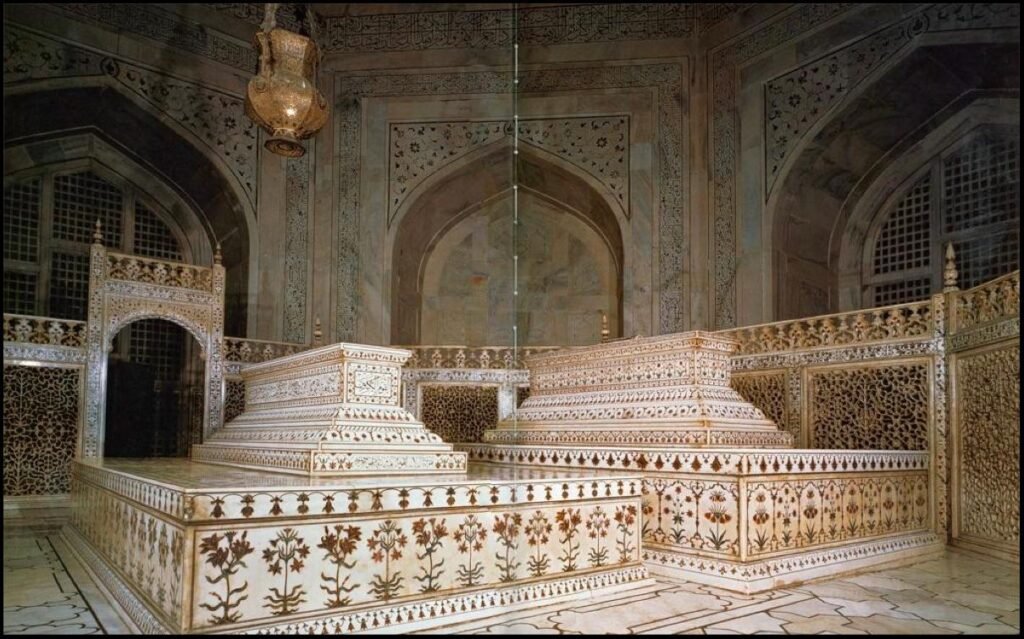
The best sculpting work was done to delight the royals’ eyes on the wall of the entry building. Although this project was completed, it had pushed the Mughal Empire dangerously close to collapse. His son overthrew the crown and took control of the Mughal Empire four years later, in 1658. Shah Jahan was imprisoned and held captive within the fort at Agra. Shah Jahan was given one amenity to look out the window and view the Taj Mahal. Shah Jahan passed away at 74 after spending eight years in jail. He was buried in the Taj Mahal, and it was time to go to Sharjah to meet Mumtaj Mahal.
Like what you see? Sign up for our newsletter and we’ll send you more articles like this one.


